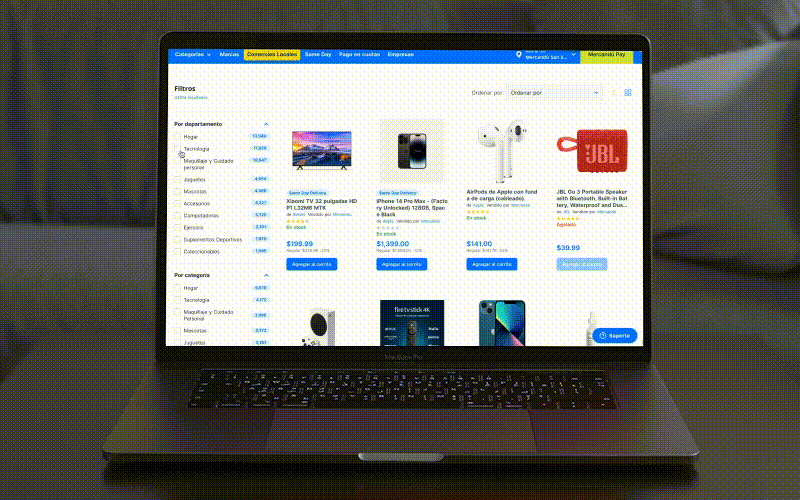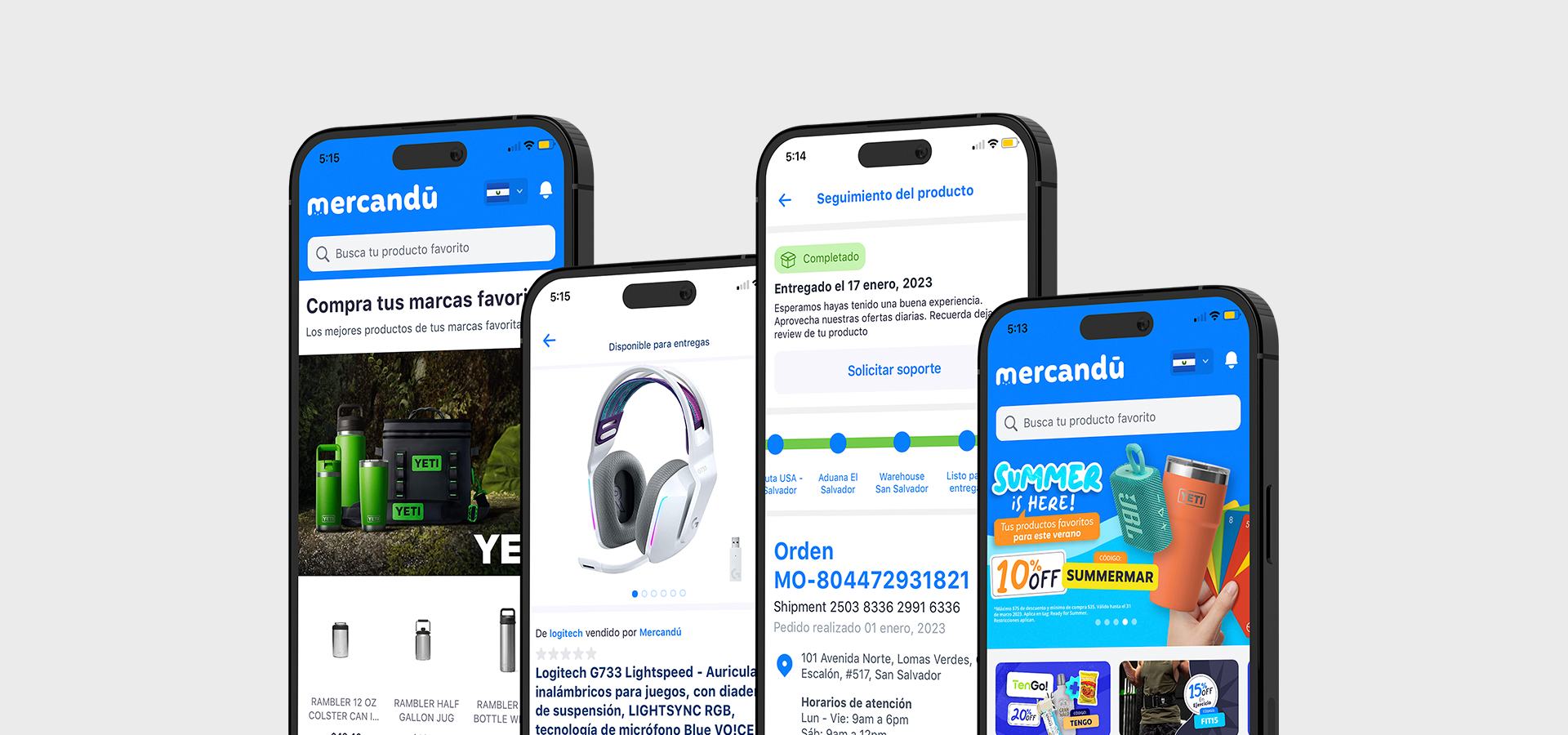With a blooming e-commerce landscape that sees new entrants daily, the question arises: how can you differentiate your platform to become a preferred choice over your competitors?
What's the secret sauce for realizing the full potential of your e-commerce? It's surprisingly simple: Optimization. This pivotal aspect can give your business the competitive edge it needs in this ruthless market. It is not only an advantageous practice but a vital move towards attaining noteworthy success in the ever-changing world of online commerce. Hence, keeping up with the latest trends isn't an option, it's a necessity.
Ready to take your e-commerce business to the next level?
We've meticulously selected a set of essential optimization practices with the intention of catalyzing your e-commerce initiatives to higher performance.
Responsive Design
Optimize for a mobile-first world! In line with the rapid expansion of e-commerce, it is essential to implement a fluid website design. This design should seamlessly adapt to various devices and screen sizes. The monumental rise in e-commerce owes its momentum to consumers using smartphones and tablets for their shopping needs. According to Statista's Market Insights, mobile e-commerce sales reached an impressive $2.2 trillion by 2023, constituting 60% of global e-commerce sales.
These numbers are predicted to surge even further. Projections by Statista experts suggest that mobile e-commerce sales might attain a peak of $3.4 trillion, a stark increase from the $982 billion made in this segment in 2018. So, it's imperative you make your website mobile-friendly.

If you’re falling behind in the race to optimize your e-commerce site for mobile users, it's high time to upgrade your online shop for the mobile audience.
Here are some crucial steps to kickstart this process:
- Put Mobile Compatibility to the Test. Use resourceful tools like Google’s Mobile-Friendly Test to ensure that both your content and graphics are visualizing completely and correctly regardless of the mobile device in use, this will help you guarantee your users, a smooth and responsive user experience.
- Keep Text Content Light and Tight. Let your words be few but expressive. Try to articulate your brand narrative and product information as briefly as possible.
- Compress Those Images. It may seem like a no-brainer, but it's worth repeating: Always compress your images before they make their way to your site. This keeps your site speedy and user-friendly.
- Embrace Minimalism in Design. Let's keep it clean and straightforward. Avoid the clutter of unnecessary elements on your site to pave the way for clear CTAs and product categories. Remember, simplicity is the ultimate sophistication.
Simplify your store's navigation for a better user experience
It's important for your e-commerce site to look good, but it’s even more important to keep it easy to navigate. As a virtual storefront, your website needs to make products and services easily accessible for your visitors. You don't want to blow the hours of effort you’ve invested in crafting the perfect collateral and copy with a site that’s difficult to navigate. An overwhelmed and exasperated visitor is just a click away from seeking solutions elsewhere.
Remember, website navigation isn't just crucial; it's fundamental. A visible navigation bar is often the first port of call for visitors, providing a quick overview of what's available and directing them to their desired destinations with minimal fuss. A well-organized, clear, and simple navigation bar is like a welcome mat, inviting visitors to explore your offerings.
But let's not limit navigation to the confines of the nav bar. There's an array of measures you can implement to enhance your visitors' website experience. Let's look into them:
- Maximize intelligent search. Leverage the power of keywords and auto-completion to streamline your website's search function. This will accelerate the process of finding exactly what visitors are looking for.
- Capitalize on filters. With a broad product range, filters become your customers' best friends. They can easily sift through your offerings based on their preferences, ensuring they find what they are looking for swiftly.
- Utilize heatmaps. Heatmaps empower you with insights into how users interact with your site. By monitoring your user’s experience on your website, you can learn what's hot and what's not, enabling you to make data-driven enhancements.
- Embrace banners. Highlight your popular products or services using website banners. This allows visitors to swiftly identify and access what you're known for.

Make the cart-to-purchase process easier
Picture this: A customer has just added a product to their cart on your e-commerce platform. You might be tempted to give yourself a pat on the back and consider it a victory for user experience. But, hold your celebratory happy dance for just a moment though—while it's undoubtedly a positive step, we're not out of the woods yet.
Conversion rate optimization isn't just about getting items into carts—it's about transforming those potential purchases into actual sales. Put simply, your user is only going to finalize their purchase if the process is as smooth and easy as possible. So, the number of steps in order to close said purchase is going to be crucial to close the deal.
Here are a few key tactics to keep in mind as you refine your user's e-commerce journey:
- Streamline the payment and checkout process. The mantra to follow here is 'less is more'. Minimizing steps, fields, clicks, and pages can potentially curtail customer drop-offs due to frustration or limited attention span. Let's check a few tactics:
Autofill fields. Whenever available, autofill as many fields on the checkout form as you can. The more fields a user needs to fill in, the more likely they are to drop out midway. This tactic proves particularly beneficial for return customers who anticipate some level of personal recognition.
Optimize forms. Keep a mindful eye on the necessity of each field in your forms. If it doesn't add value, toss it out. For fields that are mandatory, enhance user convenience by offering drop-down selections, calendar options, and auto-format information. This minimizes input errors and accelerates form completion. - Make your add-to-cart and checkout buttons as visible and consistent as possible. No one likes to get trapped in a maze when all they want to do is make a purchase. So, ensure your 'Add-to-cart' and 'Checkout' buttons are prominent, eye-catching, and consistently placed across your website.
If you're shifting content around on your pages, these buttons should do the little dance with them. Place these buttons at regular intervals on the page. That way, no matter where your visitors are, they'll always have the option to buy. In other words, make them ubiquitous. It's all about making shopping on your site a breeze.

Foster customer loyalty through transparency practices
It's essential not to downplay the significance of brand loyalty and trust when it comes to conversions. Customers who discover a brand, service, or product that proves to be reliable are more likely to be returning customers.
While trust is not an overnight achievement and requires time to nurture, there are certain markers that brands can utilize to emphasize their reliability and commitment to their clients:
- Invite your customers to share their shopping experiences by leaving reviews and ratings. Positive reviews can serve as influential testimonials, enhancing trust and establishing your credibility. On the flip side, even negative reviews can offer valuable insights, directing you toward areas that need improvement.
Don't shy away from showcasing these reviews and testimonials on your website. You can even amplify their reach by promoting them on social media platforms, and always motivate your customers to voice their own opinions. - Emphasize Your Security Measures. Guaranteeing a safe shopping experience is crucial in the world of e-commerce. Shoppers absolutely need to feel confident that their personal information is in good hands. To build this trust, you should prominently display any relevant security badges and payment logos from third parties during every step of the purchase process.
- Display contact information. Ensuring that your website prominently displays all necessary contact details and related corporate disclosures can significantly enhance your consumer engagement. Customers tend to gravitate towards companies that openly communicate their identity and offerings. Anything from return policies to customer service contact numbers can play an instrumental role in building trust. You could even step up your customer service game by incorporating a live chat feature.
According to eMarketer, a staggering 63% of customers are more likely to revisit a website that offers live chat support. The appeal isn't solely the immediate help it provides, but also the personalized experience it renders, contributing to a sense of trust and confidence.
How our services can help?
Venturing on an e-commerce journey without a seasoned crew is akin to navigating uncharted terrain without a compass. Your secret weapon? An expert team of E-commerce developers. Their expertise functions as your personal GPS in the e-commerce wilderness, not only saving you from unintentional pitfalls but also from wasting precious time and resources. This decision could make the difference between wandering aimlessly and moving forward with purpose.
Partnering with the right team, one that's fluent in the language of e-commerce is unquestionably the smart move to make.
Elaniin: Your partner in e-commerce excellence
Think of e-commerce as more than just websites and mobile apps—it's about constructing a robust online presence - a digital empire, if you will. This requires a skilled team of e-commerce experts, such as Elaniin.
Elaniin is more than just a team of software developers; we are your allies, partners, and digital guides. With our extensive knowledge of the online marketplace, we offer a complete e-commerce solution for businesses of any size and stage. Whether you're just starting out or seeking to expand your online presence, we are here to support you every step of the way.

Our record of success speaks for itself. We have assisted numerous businesses, including new market entrants and experienced e-commerce professionals with a devoted customer base. Our services include lead generation, streamlined support management, website optimization, and a wide range of digital marketing offerings, all tailored to the needs of established online companies.
Elaniin is a leading force behind major e-commerce platforms, equipped with the tools to boost your business to new heights. We stay ahead of the constantly changing e-commerce industry, ensuring your business not only survives but flourishes.
Regardless of the stage of your e-commerce journey, Elaniin has the map to your success! Feel free to contact us today and unlock your full potential in e-commerce.


